The Elder Scrolls Online Review
For years, Bethesda Game Studios have been creating experiences that stole players away to the magical world of Tamriel, providing exciting tours through the nations of Morrowind, Cyrodiil, and Skyrim. Each of the previous single-player experiences have been well-received by critics and players alike, creating a passionate community, and reaching its zenith after their most recent release, Skyrim. So when Bethesda announced they would be creating an Elder Scrolls MMORPG, expectations were instantly high. Now the final product is out, and while the game strives to nestle itself in the long-standing tradition of Elder Scrolls games, some late-game balance issues and technical concerns prevent The Elder Scrolls Online from being as engaging as its single-player counterparts.
After booting up the MMO, the first thing you will prompted to do is create a character. The creation system is actually one of the game’s best qualities, as players are offered all the customization options one would expect from the series. You can tweak the facial structure, determine their demeanor, and alter the thickness of a character’s thighs. It is a decent amount of options, given the only time you see your character in this much detail is in the inventory screen.
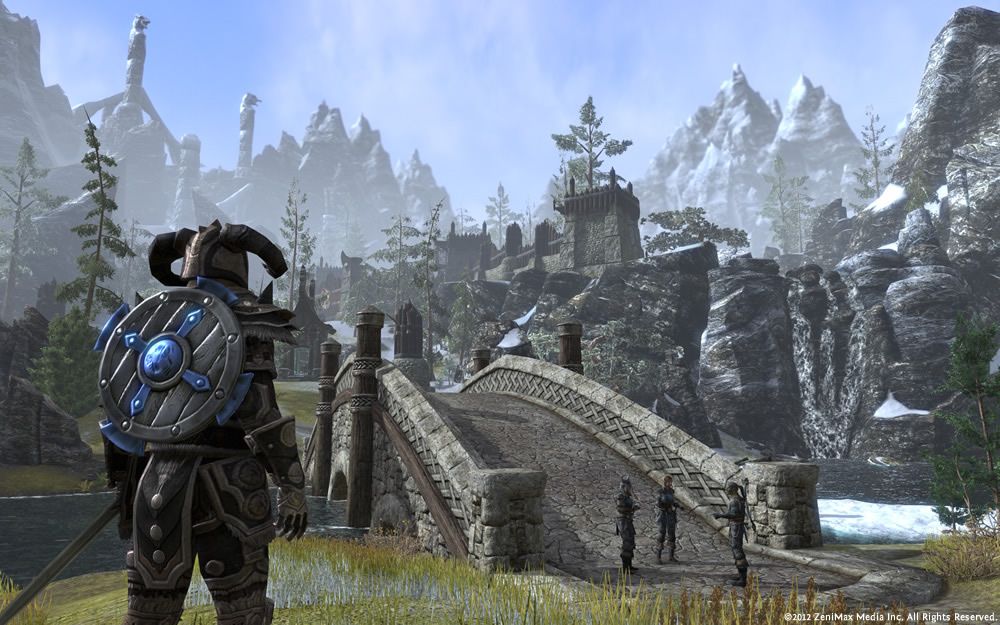
While the look of your character is, in the end, superfluous, picking a faction to join is one of the most important decisions during creation. Each faction has their own territory to adventure through, determined by the nations which make up the faction. Joining the faction of the Ebonheart Pact – made up of Skyrim, Morrowind, and Black Marsh – means you will be journeying through those respective nations and engaging in storylines specific to those areas. As I spent significant time in all faction areas, time spent in places not yet explored in the single player games, like the wild jungles of the southern elves, more special. Picking a faction also determines which race you can play as, that’s also further restricted to the member-nations of each faction.
Once you have picked out the perfect mole, selected the right tenor of voice, and chosen a side in the war for Tamriel, you are dropped into the world of Coldharbour, a realm of Oblivion. The first quest instantly demonstrates the biggest difference between previous Elder Scrolls games and Elder Scrolls Online. As soon as you wake up and escape your cell, you see dozens of other players doing the same thing. It looks like the jailbreak from hell as a smattering of other players join your escape through the dungeons of Molag Bal, battling the demonic forces of the Daedric Prince. There are parts of Elder Scrolls Online where you will find some peace and solitude, but any time you come to a dungeon or quest-necessary area, you will find a handful of players running around and fulfilling the same objectives as yourself.
The volume of player characters becomes instantly problematic as Elder Scrolls Online spends so much time telling how important you are to the world. The stories which fill the world of Tamriel feature some of the best writing the Elder Scrolls universe has ever seen. Adding to the quality of the narrative is the impressive voice casting the Elder Scrolls has become known for, featuring the talents of Jennifer Hale, Michael Gambon, Alfred Molina, and John Cleese. It is hard to find parts of Tamriel which are completely secluded, but it doesn’t always take away from the experience. As you wander the incredibly expansive world Zenimax has created, you will find plenty of time to enjoy the gorgeous soundtrack, listen to the ambient noise of wildlife, and drink in the game’s stunning vistas. Having sampled the realms of the Aldmeri Dominion, the Daggerfall Covenant, and the Ebonheart Pact, let me assure you that each one is drop-dead stunning in its own way. Elder Scrolls Online might lose some of its detail in character models, but the landscapes themselves look as gorgeous as they ever have.
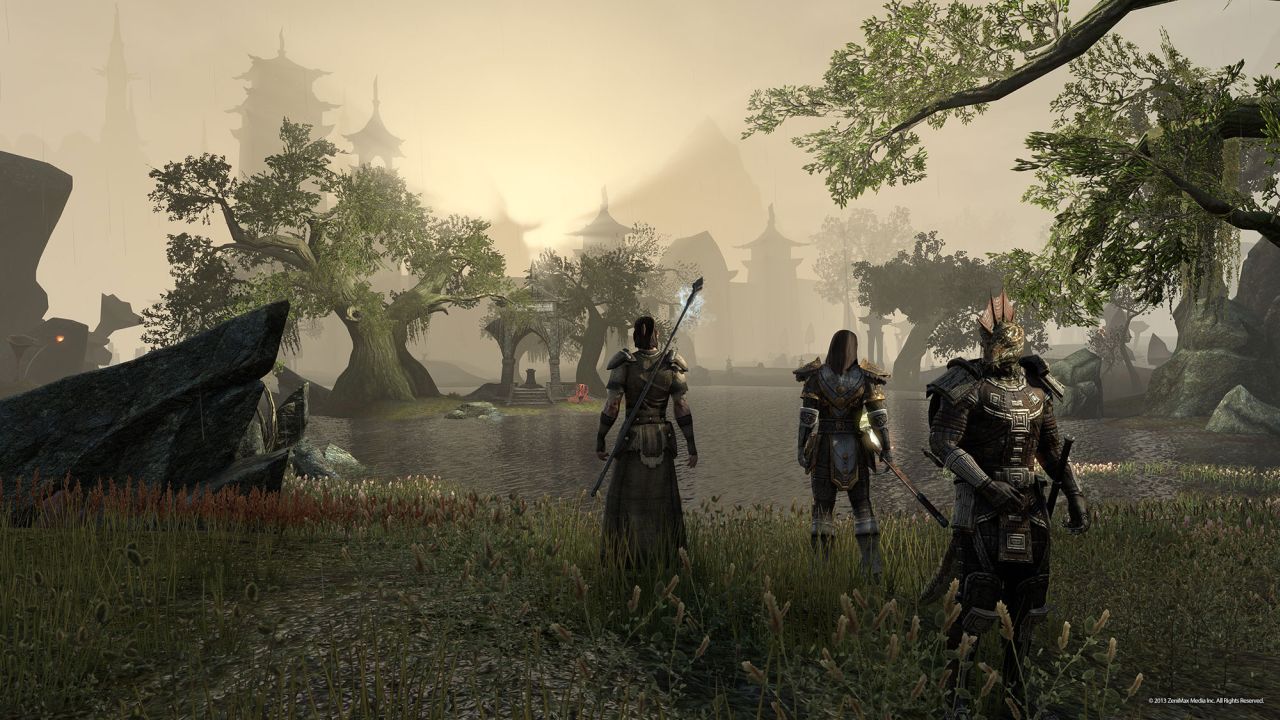
As good as the narrative aspects may be, it still feels weird to have so many people saying, “You are the only one who can help me”. Then you show up to slay the monster or save the helpless only to find several other people doing the same thing. Such is the nature of MMORPGs, but it feels specifically weird in a series which has so long predicated itself on creating immersive, lone-wolf experiences. Because of this, you better come with an open mind about playing with others.
At times the game is specifically crafted for groups of players to adventure together, however at certain intervals the dynamic shifts and you are forced to endure difficult bosses on your own. For instance, after completing the first section of the Fighter’s Guild quest with a friend, the end boss forced us to fight separately. There’s no rhyme or reason why this boss requires you to fight alone, and while we rolled the first part of the quest working together, alone the boss was ruthlessly frustrating. Another time, I found myself in a difficult dungeon but had a couple of strangers help me through. Once again, when I reached the end-boss, I was required to fight alone, though the rest of the dungeon was a team affair. There was no completing this quest – which was indicated to be in my level – until I had significantly leveled-up and backtracked. It makes one wonder why a quest can only partially be completed as a group, or why isn’t it better indicated what content will force a single player experience. It also makes you think a quest will be easy to get through with company, only to suddenly throw a difficult battle at the end.
The difficulty spikes are a recurring annoyance in The Elder Scrolls Online. The bigger problem is that the difficulty of a quest is not well communicated. When given a quest, it will be coded in a color to indicate if you are of the proper level to complete it. Orange will indicate a quest you are not skilled for, yellow means it is in your range, green means it is below your level, and grey indicates it is far beneath you. While the color codes are nice, they are wildly inconsistent. Some yellow quests I completed without issue, while others marked as within my level were incredibly difficult. Sometimes it seems like quests are coded with the assumption you will be taking them on with a group, but again there is nothing truly indicating this. Because these spikes in difficulty are not well-communicated they feel random and misleading. There’s nothing more frustrating than journeying across half of the map to reach a quest you are hopelessly under-qualified for.
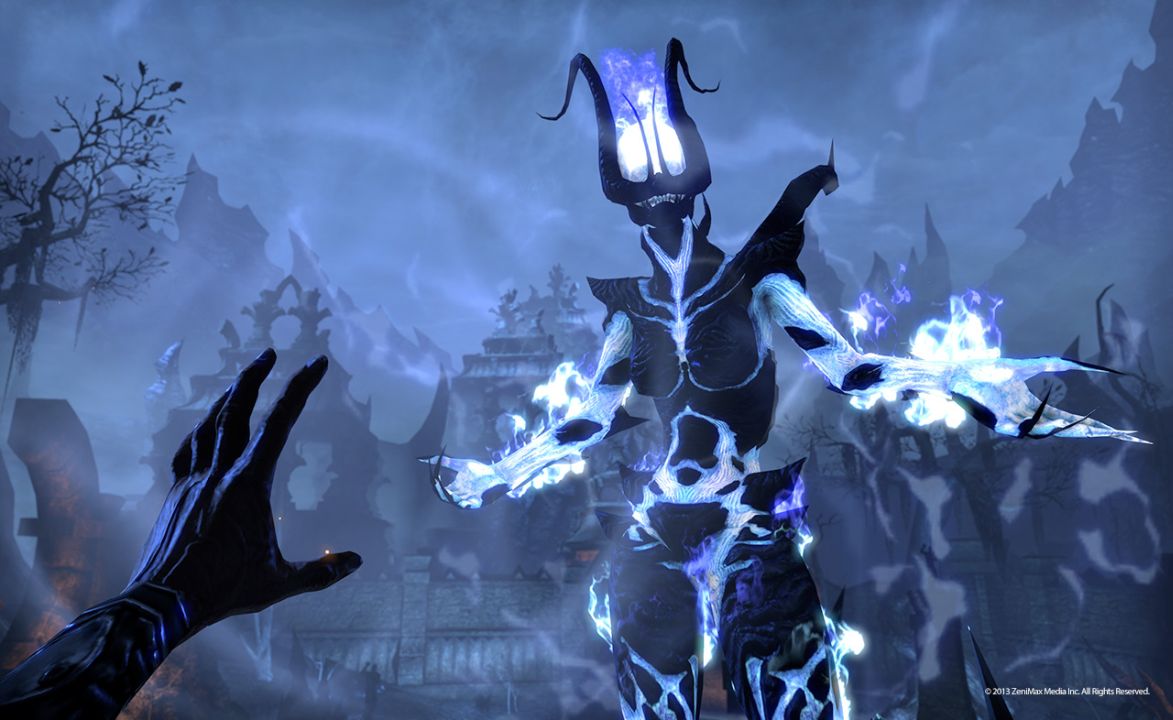
The difficulty will cause you to re-evaluate the character you have created and how you have specialized them. The Elder Scrolls Online has four different classes – Templar, Dragon Knight, Nightblade, and Sorcerer – but they are not as cookie cutter as they may appear. You can make your Nightblade a healer or your Templar a tank. The game allows you to toy with class, weapon, and focus with as much freedom as you desire. It is liberating at first, but failing to do your research can leave you with a character unfit for the late-game content. Seeking some help and re-speccing your character is something you will likely find yourself doing before long. Those looking to experiment, sample, and number-crunch will thoroughly enjoy the depth the leveling has to offer, but it threatens to be a little much for anyone not willing to fully commit themselves to the game.
Each class has their own skill tree, as you would expect in an RPG. Nightblades get inherent bonuses for stealth, Templars have healing abilities, Sorcerers get companion animals, and so on. While these classes can be manipulated to play however you want – I saw a sorcerer tank running around in heavy armor, wielding two-hand weapons – there are benefits depending upon your playstyle. Templars are good if you are looking to play alone as they have self-healing abilities, therefore they are less reliant on teammates for support. Nightblades work well as part of a group as they are best suited to striking unsuspecting enemies and need others to create distractions. The balance of these classes seems dependent on play-style, but it’s only a single piece of a giant character-creation puzzle.
There are times when it is easy to get lost in The Elder Scrolls Online. I spent long chunks of hours, roaming the gorgeous landscapes, defeating ancient evils, and wondering where the last few hours of my life went. When Elder Scrolls Online finds it rhythm, it is an all-consuming experience, but one that unfortunately gets occasionally interrupted by the previously mentioned issues. One of the best design choices of The Elder Scrolls Online is an interface which fades away when not being used. It allows these moments of solitude an exploration to show off the game’s beauty.
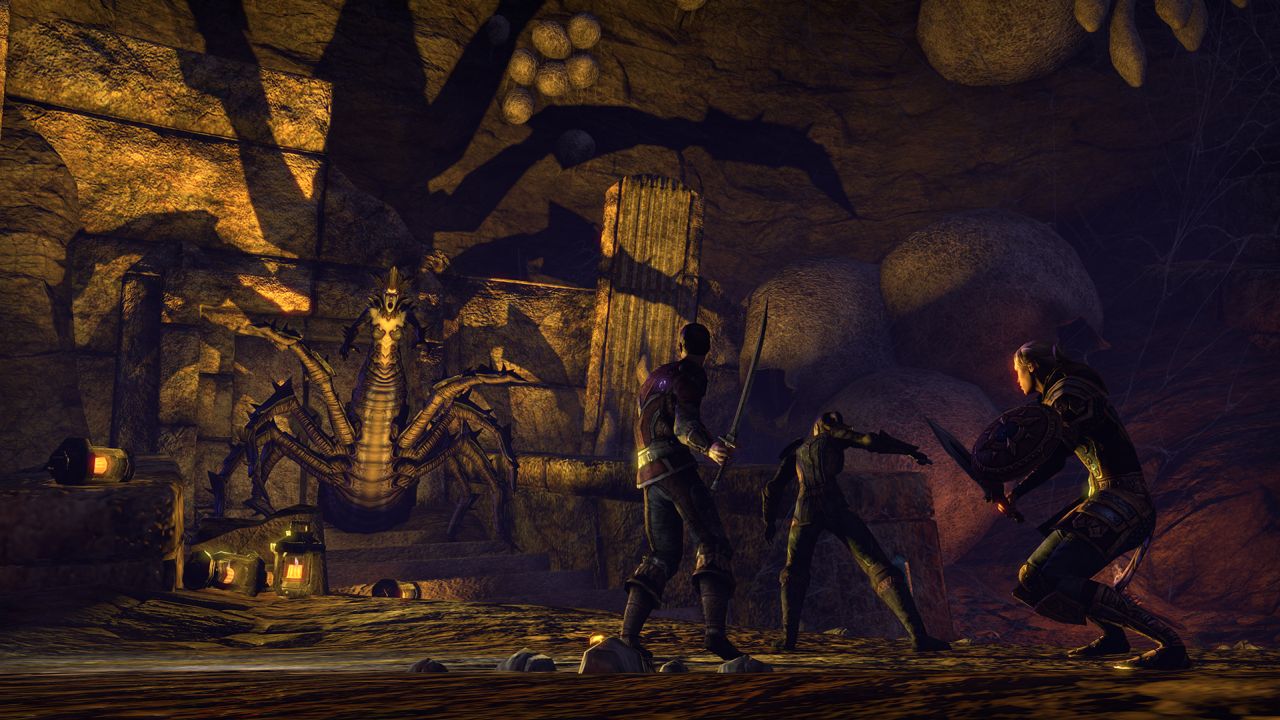
The Elder Scrolls truly is beautiful, which is especially impressive given the game’s massive amount of content. Each faction has five different zones – some have a couple of mini-starting zones – which boast tens of hours of gameplay. From the snowy mountains of Skyrim to the golden deserts of Alik’r, the game is diverse and expansive. Nothing is overtly gated at the beginning of the game, but the deeper you travel in to the world the more high-level content you will find. Playing through each faction, with their multiple storylines means you are in for hundreds of hours of game time. The Elder Scroll series is well-known for its sprawling worlds and large amounts of gameplay, and yet this game dwarves its predecessors.
One of the strengths The Elder Scrolls Online boasts is its action-RPG combat. With no auto-aiming, movement is almost as important as it is in the previous games. In fact, it is the movement which makes the first-person camera hard to use. My Nightblade liked to hang back and shoot enemies from a distance, thus backtracking and dodging were important aspects of the movement mechanics. You can park-and-shoot like other MMORPGs or simply charge in with your heavy armor, but The Elder Scrolls Online allows for more creative tactics. Certain bosses require quick movement, as you might have to stop a healing process or hit a weak spot. The drawback to this mobility-focused combat is it isn’t always apparent whether or not you’ll be hit. With all of my dodging, retreating, and advancing it almost felt random when I would avoid damage. It is refreshing to have a more active combat design for an MMO, but it is not as finely tuned as one would hope.
In between your fighting and questing you will be confronted with the ambiguous task of leveling up. There are multiple sections of skills available to your character, these sections are separated in regards to the class, race, armor, and weapon choices you make. Your class and weapon sections give you active abilities that are assigned to hotkeys and every section has its own series of passive upgrades. Leveling is a very deliberate process and picking the wrong skills can lead to a very frustrating end-game, but it’s hard to determine what skills are important in the long-run. Understanding the nuance to the numerous available skills is tricky and you’re going to need help. There are tons of fan-made sites which can help craft the character you want, but without a guide I felt myself randomly selecting skills I thought sounded cool, only to find them useless as I progressed. It would be nice if the leveling process felt less like fumbling in the dark, as anyone who isn’t looking to do the extra-credit reading is going to find themselves re-speccing as they approach high level quests. Re-speccing can be done at any time after you find the shrines – which is simple enough – but costs 100 gold per skill point, getting to be seriously pricey for high level characters.
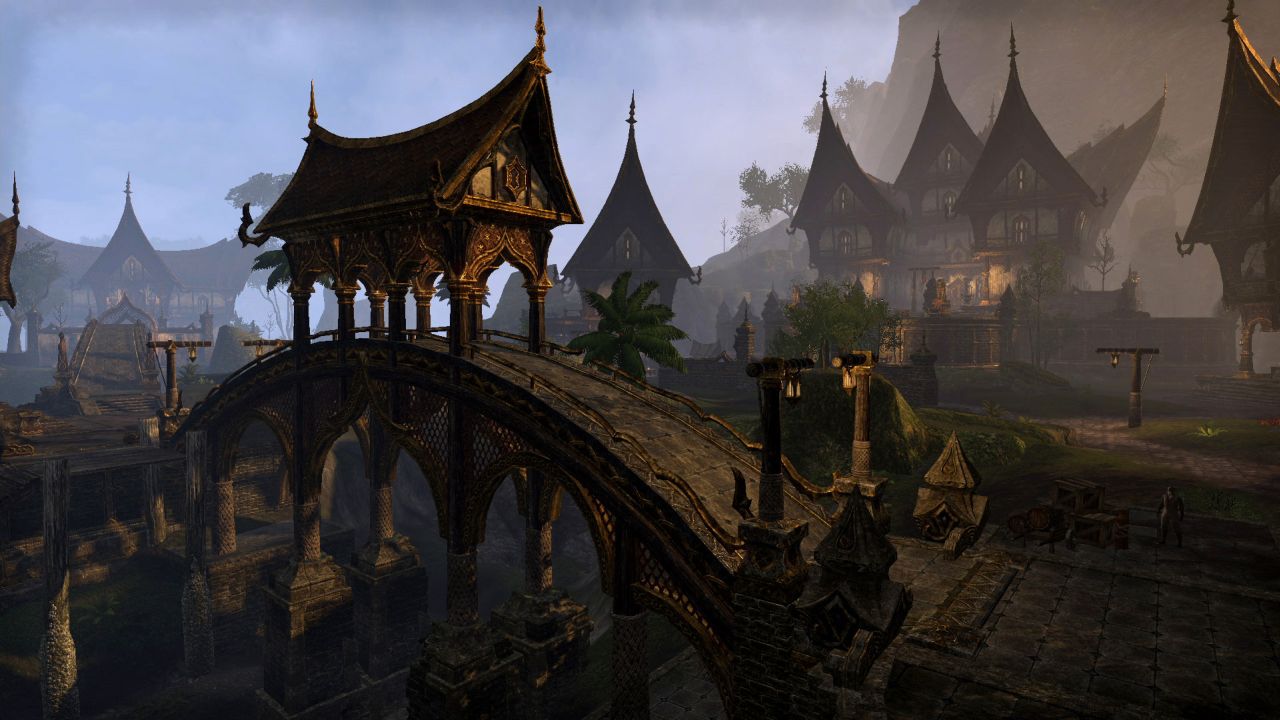
The quests themselves are a mixed bag. Some of them are your standard, “Kill 10 werewolves” fare, others are tied to some well-written stories which will make you press on to find out how they conclude. The layout of each quest is fairly cookie cutter, dungeon maps are reused giving you consistent deja-vu and the meat of the quests is killing ancient foes through well-worn tactics. It is the content itself which makes these quests unique. You might be trying to save a Tamriel version of Brigadoon or uncovering the secrets to an ancient murder. You’ll get three keys to unlock a central chamber or use a secret amulet to make a boss killable. The best part about the structure of these quests is some offered choice. You can elect to turn against a rich brat trying to uncover a long hidden relic or vanquish its ancient protector. The element of choice is something lightly tied to all Elder Scrolls games and it is nice to see it still alive in The Elder Scrolls Online.
There are many elements in the Elder Scrolls franchise which are well-suited to an MMORPG. Crafting is a natural cross-over from the single-player experience, tweaked to fit a world where economy is a global concern for all players. There is no more consistent leveling by forging and breaking apart an infinite number of iron daggers. Zenimax requires players to spend time out in the world searching for materials in order to build better weapons, armor, and clothing. Most of these are fairly prevalent, the exception being leather which can only be gathered from random dead-animal drops. Leather can be so hard to find you will actually encounter hordes of players sitting in a dungeon where they know they can find some of this rare crafting material. It represents another design issue overlooked at launch.
You can also learn crafting by deconstructing armor, weapons, and enchantments you find in the world. The more rare or foreign an item, the more you will learn from it. It creates a nice choice for players, deciding between using the valuable item they received at the end of quest, or deconstructing it to better their understanding of a craft. Alchemy, enchanting, and provisioning (cooking) work much the same way. Players can build their skills through experimentation and deconstruction, however it is a slow and tedious process which requires hours of commitment. As stated previously, those who became expert smiths in Skyrim by burning through iron daggers will be in for a rude awakening.
After you have mastered your crafting skills, done some questing, and leveled your character up to 10, you can hop into Elder Scrolls Online’s PvP. Taking place in Cyrodiil, the central nation of the Empire which rules Tamriel, players battle against other factions for control of the Imperial Throne. The PvP world is broken into dozens of servers, each their own individual instance. One server may be controlled primarily by the Daggerfall Covenant, another might be an even split between the three factions. While you can operate as an individual unit, rushing the front lines as a tank or hanging back as archery support, the real meat of the PvP lies in siege weapons. There is some combat which takes place in the vast expanse of country between encampments, but generally battles shift between either side falling back to the confines of their fortresses and holding off a siege. Players can purchase ballistas, battering rams, trebuchets, catapults, and other large scale weapons to attack or defend, so while your efforts as an archer, mage, or swordsman are appreciated, they are almost insignificant compared to having a good ballista on your wall. There are many exciting moments to be had in the PvP with players in the chat giving rallying cries such as, “Hold the Line” or “Fall back to the Keep”. It feels exhilarating to take part in these battles, but after a few hours in it becomes a lot of back and forth with little payoff.
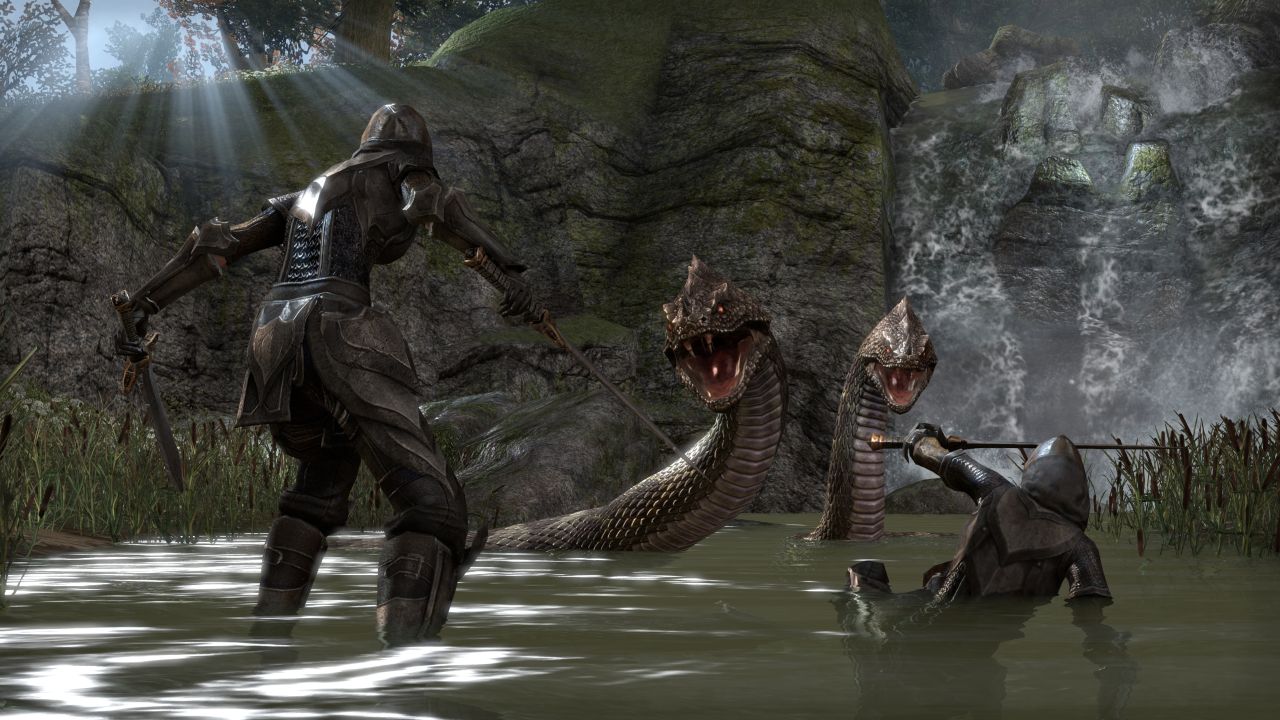
The PvP and crafting are exemplary of The Elder Scrolls Online on the whole. The game is a deep grind, requiring many hours of commitment. This commitment gives way to a sense of accomplishment, such as taking part in a siege which finally captures a fortress or seeing your craftsmanship yield more visually impressive armor. This type of requirement is expected for an MMO, and there are plenty of fans – especially Elder Scrolls fans – who are used to this and Elder Scrolls Online is happy to provide. But again, hitting walls of difficulty or spending countless hours hunting for a beast to get the last scraps of leather needed tries one’s patience and dilutes the fun.
The Elder Scrolls Online also runs into its fair share of technical difficulties. To be fair, the servers were fairly stable for the first month of play, a decent feat for any online game at launch. That being said, servers were taken down regularly for a couple hours for maintenance. More prominent are quests which are bugged, or at least you think are bugged but simply require you to stand in the exact right spot to trigger an action. It is frustrating to think you have encountered a bug, leave a quest for hours, come back to it, think it is still bugged, then check a forum to find out you need to look up and turn left to pick up the magic crystal. A portal will be opened for you, but you can’t enter it unless you run around for a minute or two looking for the exact right spot to trigger the action prompt. Zenimax has shown a commitment to weeding out these problems and worked to provide consistent updates (hence the maintenance), but the quests which aren’t technically bugged are the bigger problems because they are not getting reported as consistently, thus not getting resolved.
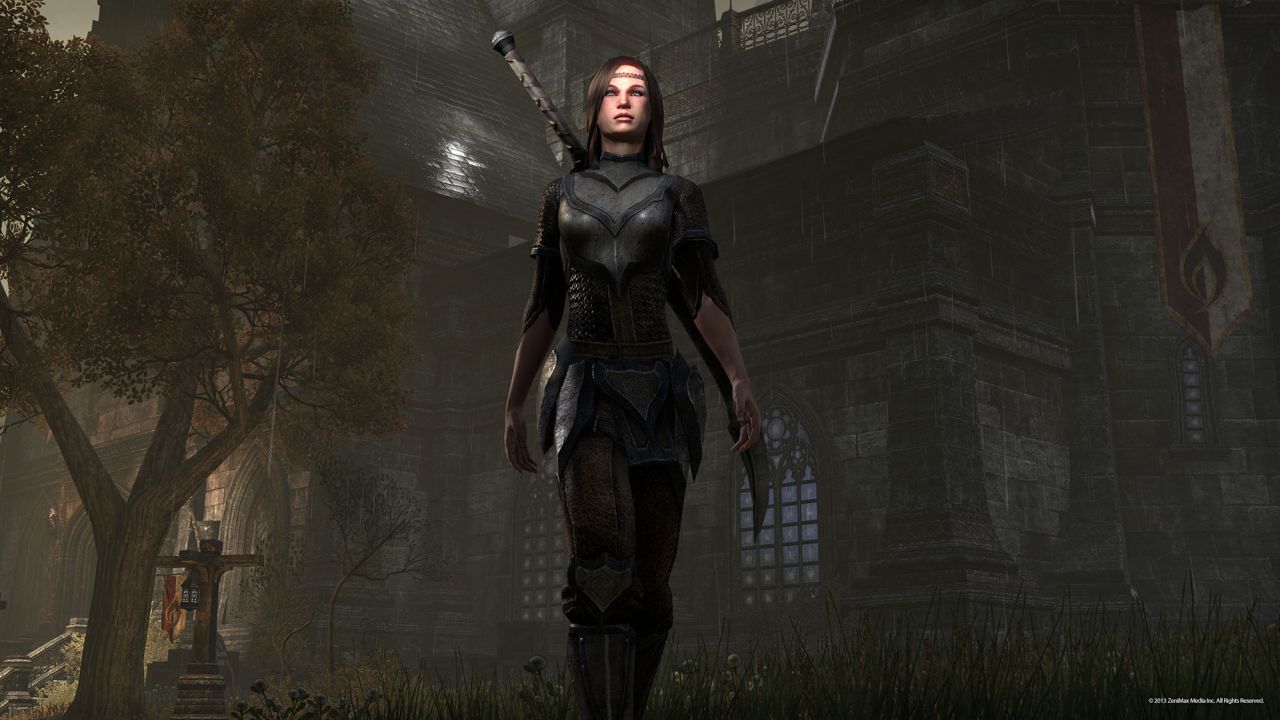
I also found myself getting disconnected quite often and at inconvenient times. Sometimes I would go hours without issue, but there are times I would log in only to have myself disconnected five minutes later. If you’re disconnected around enemies, your character will die, which damages your armor each time, and that costs money to repair. Making these disconnects not only annoying, but costly. It seemed to be a larger issue when playing in a group, becoming particularly troublesome as we fought our way through a dungeon and my group had to keep waiting for me to connect time and again. In one of these instances I logged back in to find my character stuck in an infinite fall. The falling character bug is one – based on help forums – which has afflicted numerous players, but this time my character was not playable until I wrote to customer support to have the character respawned back into the world. These bugs have persisted enough for Zenimax to issue five days of free game time an apology. This is most likely launch pains, and it is hard to imagine Zenimax will not be sorting these issues eventually, but as of right now it is simply another road block keeping you from digging your teeth into the amazing world the developers have created.
The current issues facing The Elder Scrolls Online are pesky, but underneath them is a really great game which blends the much-loved single-player formula with that of an MMORPG. It is hard to imagine Zenimax won’t resolve many of these complaints with updates and patches in the future, but one can’t speculate on what The Elder Scrolls Online will become. Right now hiccups such as difficulty balance and technical quirks plague the experience, especially in the late game. Hardcore Elder Scrolls fans and those hungry for a new MMORPG might be able to look past these issues and see all the good things Zenimax Online Studios has built, but those on the fence might want to wait until the experience is smoothed out.
Review based on ~100 hours of playtime, across all classes
